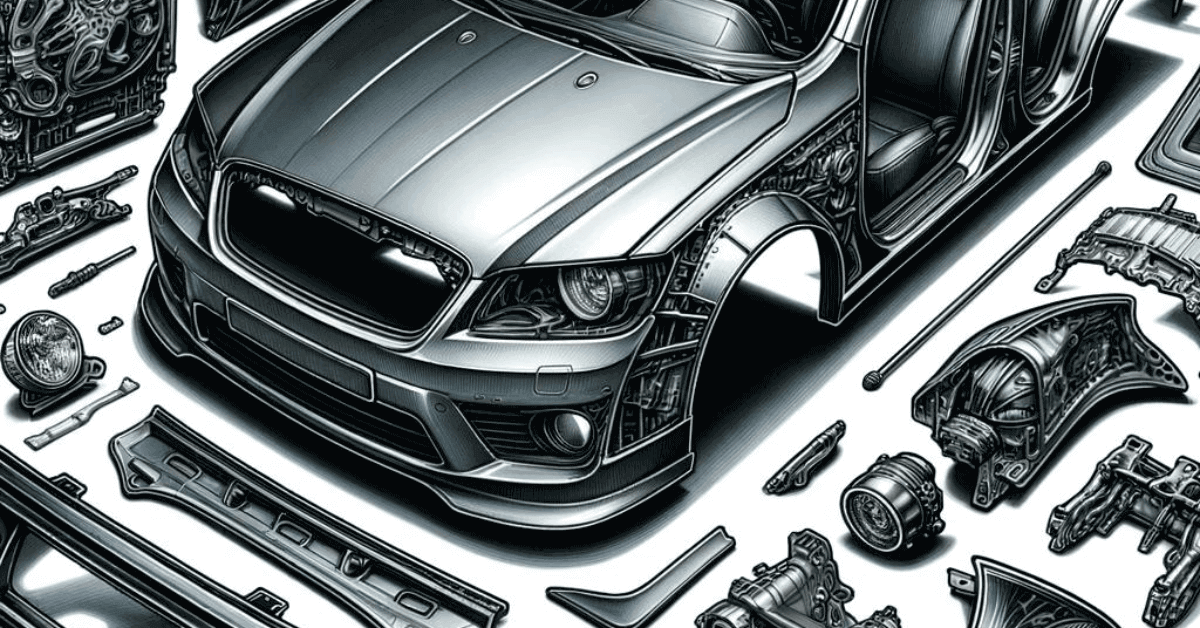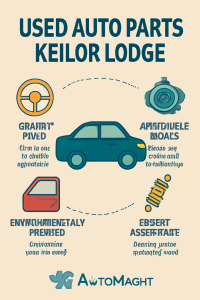When it comes to maintaining and enhancing your vehicle, paying attention to its body parts is crucial. From ensuring safety on the road to preserving the aesthetics of your ride, auto body parts play a significant role. In this comprehensive guide, we’ll delve into everything you need to know about auto body parts, from their types and importance to factors to consider when purchasing them.
Understanding the Importance of Quality Auto Body Parts
Auto body parts are not just about aesthetics but are integral to your vehicle’s structural integrity and safety. Whether it’s the exterior panels or interior components, each part contributes to your car’s overall functionality and appearance. Quality parts enhance safety and add value to your vehicle, whether you’re driving it or looking to sell it in the future.
The Role of Auto Body Parts in Vehicle Safety
One of the primary functions of auto body parts is to protect passengers during a collision. High-quality bumpers, body panels, and other parts are made to absorb impact and reduce harm to the car’s occupants. Investing in high-quality parts can significantly improve the crashworthiness of your vehicle, reducing the risk of serious injuries.
Impact on Aesthetics and Resale Value
Auto body parts add to your vehicle’s overall appearance in addition to safety. Whether repairing damage from an accident or customizing your ride, choosing the right parts can significantly affect its appearance. Moreover, vehicles with well-maintained body parts often command higher resale prices, making them worthwhile investments for the future.
Types of Auto Body Parts
Exterior Auto Body Parts
The essential exterior components are bumpers, fenders, doors, and grilles. Bumpers serve as the first line of defense in collisions, absorbing impact and minimizing damage to the vehicle’s frame. Fenders protect the wheel well and enhance aerodynamics, while doors provide access to the vehicle’s interior. Grilles add a stylish touch and safeguard the engine compartment from debris.
Interior Auto Body Parts
Interior components such as seats, dashboards, floor mats, and headliners enhance comfort and functionality. Seats provide ergonomic support for passengers, while the dashboard houses vital instruments and controls. Floor mats protect the vehicle’s flooring from dirt and wear, while headliners contribute to interior insulation and aesthetics.
Importance of Quality Auto Body Parts
Investing in high-quality auto body parts is paramount for several reasons. First, quality parts ensure optimal safety by maintaining the vehicle’s structural integrity. Additionally, premium body parts enhance the vehicle’s aesthetics, contributing to its appeal and resale value.
Factors to Consider When Purchasing Auto Body Parts
When shopping for auto body parts, it’s essential to consider factors such as compatibility, quality, warranty, and price. Ensuring the parts are compatible with your vehicle model is crucial for proper fitment and functionality. Also, prioritizing quality and choosing reputable brands can prevent premature wear and structural failure.
Where to Buy Auto Body Parts
Auto body parts are available from various sources, including OEM dealerships, aftermarket retailers, and online marketplaces. OEM dealerships offer parts directly from the vehicle manufacturer, ensuring compatibility and quality, but often at a higher price. Aftermarket retailers provide a more affordable alternative, offering a wide selection of parts from third-party manufacturers. Online markets let customers compare products and reviews from their homes, making them convenient and accessible.
DIY vs. Professional Installation
Deciding between DIY and professional installation depends on skill level, time constraints, and job complexity. DIY installation offers cost savings and a sense of accomplishment but may require specialized tools and technical expertise. Professional installation ensures accuracy and reliability, particularly for complex components or structural repairs.
Maintenance and Care Tips for Auto Body Parts
Maintaining auto body parts properly is crucial to extending their lifespan and aesthetic appeal. Frequent washing with a mild soap and water solution aids in the removal of dirt and impurities, thereby protecting the paint and finish. Applying wax and polish protects against UV damage and maintains a glossy shine. Implementing rust prevention measures such as rust inhibitors and undercoating can safeguard against corrosion, particularly in areas prone to moisture and salt exposure.
FAQs About Auto Body Parts
Compatibility can be determined by referencing the vehicle’s make, model, and year and consulting with a trusted automotive expert or parts retailer.
While aftermarket parts may offer cost savings, quality can vary depending on the manufacturer. Researching and selecting reliable businesses with a solid reputation for dependability and quality is essential.
DIY installation is feasible for some components but may require specialized tools and technical expertise. For complex installations or structural repairs, professional assistance is recommended.
The replacement frequency depends on wear and tear, damage, and environmental conditions. When parts need to be replaced, regular maintenance and inspections can assist in determining when they do.
Promptly addressing damage by repairing or replacing affected parts can prevent further deterioration and maintain the vehicle’s integrity and aesthetics.
Conclusion
In conclusion, auto body parts are crucial to a vehicle’s functionality, safety, and aesthetics. Choosing high-quality parts and prioritizing proper maintenance is essential for longevity and preserving the vehicle’s value. Whether opting for OEM or aftermarket parts, consumers should prioritize compatibility, quality, and reputable suppliers to achieve optimal results.







